Basetech BT-2226737 Handleiding
Basetech
Thermostaat
BT-2226737
Bekijk gratis de handleiding van Basetech BT-2226737 (4 pagina’s), behorend tot de categorie Thermostaat. Deze gids werd als nuttig beoordeeld door 21 mensen en kreeg gemiddeld 4.4 sterren uit 11 reviews. Heb je een vraag over Basetech BT-2226737 of wil je andere gebruikers van dit product iets vragen? Stel een vraag
Pagina 1/4

Montage und Anschluss
Der Thermostat ist mit 3 Anschlüssen für Kabelschuhe verse-
hen, beachten Sie dazu auch den Aufdruck auf der Unterseite
des Thermostats.
Lassen Sie den Einbau und Anschluss im Zweifelsfall durch eine
Fachkraft durchführen.
Funktionsweise
In dem langen Kapillarröhrchen (und der Fühlerspitze), die fest mit dem Thermostat verbunden ist, bendet
sich eine Flüssigkeit, die sich bei Erwärmung ausdehnt. Im Thermostat bendet sich am Ende des Kapillar-
röhrchens eine sogenannte Druckdose, die über die Einstellachse mechanisch vorgespannt wird.
Eine über den Schaltkontakt aktivierte Heizung erhöht z.B. die Temperatur, die Flüssigkeit im entsprechend
montierten Fühler erwärmt sich und dehnt sich dabei aus.
Bei einer bestimmten Temperatur unterbricht das Stellglied an der Druckdose den Stromkreis.
Die Temperatur sinkt nun wieder, die Flüssigkeit im Kapillarröhrchen zieht sich zusammen.
Bei einer bestimmten Temperatur wird jetzt der Stromkreis wieder geschlossen und der Vorgang wiederholt
sich.
Die Temperatur, bei der der Thermostat den Stromkreis unterbricht, ist mittels der Einstellachse veränderbar.
Da es sich nicht um eine elektronische Regelung handelt, ist bei diesem Thermostat keine genaue Einstel-
lung einer bestimmten Temperatur möglich.
Durch den Umschaltkontakt kann die Regelung sowohl in Kühlrichtung als auch in Heizrichtung
erfolgen, je nachdem, welche Kontakte des Thermostats für den Anschluss verwendet werden
(C + 2 bzw. C + 1).
Pege und Reinigung
• Verwenden Sie keine aggressiven Reinigungsmittel, Alkohol oder andere chemischen Lösungsmittel, da
diese zu Schäden am Gehäuse und zu Fehlfunktionen führen können.
• Verwenden Sie zum Reinigen des Produkts ein trockenes, faserfreies Tuch.
Entsorgung
Elektronische Geräte sind Wertstoffe und gehören nicht in den Hausmüll. Entsorgen Sie das
Produkt am Ende seiner Lebensdauer gemäß den geltenden gesetzlichen Bestimmungen.
Sie erfüllen damit die gesetzlichen Verpichtungen und leisten Ihren Beitrag zum Umweltschutz.
Technische Daten
Kontaktbelastbarkeit 250 V/AC, 50/60 Hz, 20 A ..............................................
Regelbereich -30 °C bis +30 °C .........................................................
Max. Temperatur für Fühler +36 °C ...................................
Max. Temperatur für Thermostatgehäuse.............. +120 °C
Genauigkeit ±2 °C ...........................................................
Schalthysterese (Differenz) 4 ±2 °C ...................................
Länge des Kapillarröhrchens ca. 1 m .................................
Biegeradius für Kapillarröhrchen min. 5 mm ...........................
Bedienungsanleitung
Einbau-Thermostat (-30 bis +30 °C)
Best.-Nr. 2226737
Bestimmungsgemäße Verwendung
Der Thermostat ist zur Temperatursteuerung (z.B. in Verbindung mit Heizungen oder Kühlgeräten) im Tem-
peraturbereich von -30 ºC bis +30 ºC vorgesehen. Die Sicherheits- und Montagehinweise sind unbedingt
zu beachten. Dieses Produkt erfüllt die gesetzlichen, nationalen und europäischen Anforderungen. Alle ent-
haltenen Firmennamen und Produktbezeichnungen sind Warenzeichen der jeweiligen Inhaber. Alle Rechte
vorbehalten.
Lieferumfang
• Thermostat mit Kapillarfühler • Bedienungsanleitung
Aktuelle Bedienungsanleitungen
Laden Sie aktuelle Bedienungsanleitungen über den Link www.conrad.com/downloads
herunter oder scannen Sie den abgebildeten QR-Code. Befolgen Sie die Anweisungen
auf der Webseite.
Symbol-Erklärung
Das Symbol mit dem Blitz im Dreieck weist auf Gefahren für Ihre Gesundheit hin,
z. B. Stromschläge.
Das Symbol mit dem Ausrufezeichen im Dreieck weist auf wichtige Informationen in dieser Be-
dienungsanleitung hin. Lesen Sie diese Informationen immer aufmerksam.
Das Pfeilsymbol weist auf besondere Informationen und auf Ratschläge zur Bedienung hin.
Sicherheitshinweise
Lesen Sie die Bedienungsanleitung sorgfältig durch und achten Sie besonders auf die Sicher-
heitshinweise. Sollten Sie die in dieser Bedienungsanleitung aufgeführten Sicherheitshin-
weise und Informationen für einen ordnungsgemäßen Gebrauch nicht beachten, übernehmen
wir keine Haftung für daraus resultierende Personen- oder Sachschäden. Außerdem erlischt
in solchen Fällen die Gewährleistung/Garantie.
a) Allgemein
• Aus Sicherheits- und Zulassungsgründen ist das eigenmächtige Umbauen und/oder
Verändern des Produkts nicht zulässig. Zerlegen Sie es niemals.
• Das Produkt darf keinen extremen Temperaturen, starken Vibrationen oder starken mechanis-
chen Beanspruchungen ausgesetzt werden.
• Das Produkt darf nicht feucht oder nass werden; es ist nur für den Betrieb in trockenen,
geschlossenen Innenräumen geeignet.
• Das Produkt ist kein Spielzeug, es gehört nicht in Kinderhände!
• Lassen Sie das Verpackungsmaterial nicht achtlos liegen, dieses könnte für Kinder zu einem
gefährlichen Spielzeug werden.
• In gewerblichen Einrichtungen sind die Unfallverhütungsvorschriften des Verbandes der gew-
erblichen Berufsgenossenschaften für elektrische Anlagen und Betriebsmittel zu beachten!
b) Montage
• Die Installation des Produkts darf nur durch eine qualizierte Fachkraft (z.B. Elektriker)
erfolgen, die mit den einschlägigen Vorschriften (z.B. VDE) vertraut ist!
Durch unsachgemäße Arbeiten an der Netzspannung gefährden Sie nicht nur sich
selbst, sondern auch andere!
Haben Sie keine Fachkenntnisse für die Montage, so nehmen Sie die Montage nicht
selbst vor, sondern beauftragen Sie einen Fachmann.
• Der Thermostat darf nur in geschlossenen Gehäusen montiert und betrieben werden. Nur
die Achse für den Drehknopf darf nach außen führen. Auf der Achse muss der mitgelieferte
Drehknopf montiert werden (oder ein anderer geeigneter Drehknopf).
• Die vorgeschriebenen Sicherheitsabstände zwischen Netzspannung führenden Teilen (Kon-
takte des Thermostats bzw. Anschlüsse usw.) und berührbaren Gehäuseteilen (das Gerät, in
das der Thermostat eingebaut wird) sind unbedingt einzuhalten.
• Das Gerät, in das der Thermostat eingebaut werden soll, muss von der Netzspannung
und allen anderen Kabeln/Leitungen getrennt werden. Ziehen Sie den Netzstecker aus der
Netzsteckdose.
Wenn das Gerät nicht über einen Netzstecker verfügt, sondern fest mit der Netzspannung
verbunden ist, so schalten Sie den zugehörigen Sicherungsautomaten und zusätzlich den
FI-Schutzschalter ab, so dass die Netzzuleitung allpolig von der Netzspannung getrennt ist.
Sichern Sie diese vor unberechtigtem Wiedereinschalten, z.B. mit einem Warnschild.
Überprüfen Sie die Spannungsfreiheit mit einem geeigneten Messgerät (z.B. Digitalmulti-
meter).
• Kondensatoren im Gerät, in das der Thermostat eingebaut werden soll, können auch nach
dem Abschalten und Trennen von der Netzspannung noch lange Zeit geladen sein.
Es besteht Lebensgefahr durch einen elektrischen Schlag!
• Verwenden Sie den Thermostat nicht in Räumen oder bei widrigen Umgebungsbedingungen,
wo brennbare Gase, Dämpfe oder Stäube vorhanden sind oder vorhanden sein können! Es
besteht Explosionsgefahr!
• Die Anschlussleistung des Thermostats (siehe „Technische Daten“) darf nicht überschritten
werden.
• Beim Verlegen des Kapillarrohrs und auch beim Anbringen des Fühlers ist darauf zu achten,
dass weder Kapillarrohr noch der Fühler geknickt, gequetscht oder anderweitig beschädigt
werden.
Das Kapillarrohr und auch der Fühler können und dürfen nicht gekürzt oder abgeschnitten
werden.
Drehen Sie keine Schrauben o.ä. durch die Fühlerspitze.
Dadurch wird der Thermostat unbrauchbar!
Dies ist eine Publikation der Conrad Electronic SE, Klaus-Conrad-Str. 1, D-92240 Hirschau (www.conrad.com). Alle Rech-
te einschließlich Übersetzung vorbehalten. Reproduktionen jeder Art, z. B. Fotokopie, Mikroverlmung oder die Erfassung
in elektronischen Datenverarbeitungsanlagen bedürfen der schriftlichen Genehmigung des Herausgebers. Nachdruck,
auch auszugsweise, verboten. Die Publikation entspricht dem technischen Stand bei Drucklegung.
Copyright 2020 by Conrad Electronic SE. *2226737_v1_0120_02_dh_m_de

Installation and Connection
The thermostat is provided with three connections for cable lugs;
also observe the label on the bottom of the thermostat.
If in doubt, leave the installation and connection to a specialist.
Operating Principle
There is a liquid in the long capillary tube (and the sensor tip),
which is permanently connected to the thermostat, which ex-
pands on warming. At the end of the capillary tube in the thermostat there is a pressure sensor, which is
mechanically preloaded by the adjustment spindle.
A heating device, which is activated via the switch contact, increases the temperature; the liquid in the
installed sensor warms up and expands.
The control element on the pressure sensor breaks the circuit, when it reaches a given temperature.
The temperature falls again and the liquid in the capillary tube contracts.
At a given temperature, the circuit closes again and the process is repeated.
The temperature at which the thermostat breaks the circuit can be adjusted using the adjustment spindle.
Since this is not an electronic control, it is not possible to set thermostat exactly to a specic temperature.
The switch contact allows control of both cooling and heating, depending on which thermostat
contacts are used to make the connection (C + 2 or C + 1).
Care and Cleaning
• Do not use any aggressive cleaning agents, rubbing alcohol or other chemical solutions as they can
cause damage to the housing and malfunctioning.
• Clean the product with a dry, bre-free cloth.
Disposal
Electronic devices are recyclable waste and must not be disposed of in the household waste.
At the end of its service life, dispose of the product in accordance with applicable regulatory
guidelines.
You thus fulll your statutory obligations and contribute to the protection of the environment.
Technical Data
Contact load 250 V/AC, 50/60 Hz, 20 A ..........................................................
Control range -30 °C to +30 °C .........................................................
Max. temperature for sensor +36 °C .................................
Max. temperature for thermostat casing +120 °C ................
Accuracy ±2 °C ................................................................
Switching hysteresis (differential) 4 ±2 °C ..........................
Length of capillary tube approx. 1 m .........................................
Bending radius for capillary tube min. 5 mm ...........................
Operating Instructions
Inbuilt Thermostat (-30 to +30 °C)
Item No. 2226737
Intended Use
The thermostat is intended for controlling the temperature (e.g. in connection with radiators or cooling units)
within a temperature range of -30 ºC to +30 ºC. All the safety and installation instructions must be followed
carefully. This product complies with the applicable National and European requirements. All names of com-
panies and products are the trademarks of the respective owner. All rights reserved.
Delivery Content
• Thermostat with capillary sensor
• Operating instructions
Up-to-Date Operating Instructions
Download the latest operating instructions at www.conrad.com/downloads or scan the
QR code shown. Follow the instructions on the website.
Explanation of Symbols
The symbol with the lightning in the triangle is used if there is a risk to your health, e.g. due to an
electric shock.
The symbol with the exclamation mark in the triangle is used to indicate important information in
these operating instructions. Always read this information carefully.
The arrow symbol indicates special information and advice on operation.
Safety Instructions
Read the operating instructions carefully and especially observe the safety information.
If you do not follow the safety instructions and information on proper handling in this
manual, we assume no liability for any resulting personal injury or damage to property.
Such cases will invalidate the warranty/guarantee.
a) General Information
• The unauthorised conversion and/or modication of the product is not allowed for safety and
approval reasons (CE). Never dismantle the product
• The product must not be exposed to extreme temperatures, strong vibrations or heavy
mechanical stress.
• The product must not get damp or wet, it is solely intended for use in dry, indoor spaces.
• The product is not a toy and should be kept out of the reach of children!
• Do not leave packaging material carelessly lying around since it could become a dangerous
plaything for children.
• -In commercial institutions, the accident prevention regulations of the employer’s liability insur
ance association for electrical systems and operating facilities are to be observed!
b) Installation
• The product may only be installed by a qualied technician (e.g. electrician) who is
familiar with the relevant regulations (e.g. VDE, German electrical wiring regulations)!
Improper work, carried out on the mains voltage, endangers not only your own life but
also the life of others!
If you do not have the expertise required for the installation, do not install it yourself
but ask a qualied technician.
• The thermostat may only be installed and operated in enclosed housings. Only the spindle for
the rotary knob may lead to the outside. The enclosed rotary knob (or another suitable rotary
knob) must be mounted on the spindle.
• The specied safety distance between live components carrying mains voltage (contacts or
connections on the thermostat, etc.) and exposed parts of the enclosure (the device in which
the thermostat is installed) must be maintained at all times.
• The device in which the thermostat is to be installed must be disconnected from the mains
voltage and all other cables/leads. Disconnect the mains plug from the mains socket.
If the device does not have a mains plug but is permanently connected to the mains voltage,
switch off the corresponding circuit breakers and also at the residual current circuit breaker, so
the mains supply line is disconnected on all poles from the mains voltage.
Secure it against unauthorised reconnection, e.g., with a danger sign.
Check there is no voltage with a suitable measuring instrument (e.g. a digital multimeter).
• Capacitors in the device in which the thermostat is to be installed may remain charged for
a long time, even after the device is switched off and disconnected from the mains voltage.
• There is a risk of a life-threatening electric shock!
• Do not use the thermostat in rooms or under adverse ambient conditions where combustible
gases, vapours or dust are or may be present! There is a risk of explosion!
• The input power of the thermostat (see “Technical Data”) must not be exceeded.
• When routing the capillary tube and also when attaching the sensor, make sure that neither
the capillary tube nor the sensor is kinked, pinched or otherwise damaged.
Do not shorten or cut off the capillary tube or the sensor.
Do not screw any screws or anything similar through the sensor tip.
Doing so renders the thermostat unusable!
This is a publication by Conrad Electronic SE, Klaus-Conrad-Str. 1, D-92240 Hirschau (www.conrad.com). All rights in-
cluding translation reserved. Reproduction by any method, e.g. photocopy, microlming, or the capture in electronic data
processing systems require the prior written approval by the editor. Reprinting, also in part, is prohibited. This publication
represent the technical status at the time of printing.
Copyright 2020 by Conrad Electronic SE. *2226737_v1_0120_02_dh_m_en

Montage et raccordement
Le thermostat est doté de 3 connexions pour les cosses de
câbles ; tenez compte ici de l’inscription au bas du thermostat.
En cas de doute, conez le montage et le raccordement à un
spécialiste.
Fonctionnement
Dans le long tube capillaire (et la pointe de la sonde), qui est
relié de manière xe au thermostat, se trouve un liquide qui se dilate lorsqu’il est chauffé. À l’extrémité du
tube capillaire dans le thermostat se trouve une sorte de capsule anéroïde qui se détend mécaniquement
via l’axe de réglage.
Un radiateur activé à l’aide du contact de commutation augmente par exemple la température, puis le liquide
dans la sonde installée est chauffé et se dilate ensuite.
À une certaine température, l’actionneur de la capsule anéroïde coupe le circuit électrique.
La température baisse alors et le liquide dans le tube capillaire se rétracte.
À une certaine température, le circuit électrique est de nouveau fermé et le processus se répète.
La température à laquelle le thermostat coupe le circuit électrique est réglable avec l’axe de réglage.
Étant donné qu’il ne s’agit pas d’une régulation de type électronique, ce thermostat ne permet pas le réglage
exact d’une température précise.
Le contact à deux directions permet une régulation autant pour la réfrigération que pour le
chauffage, selon les contacts du thermostat utilisés lors du raccordement (C + 2 ou C + 1).
Entretien et nettoyage
• N’utilisez pas de produits de nettoyage abrasifs, d’alcool à frictionner ou autre produit chimique : ceux-ci
risqueraient d’abîmer le boîtier et de causer des dysfonctionnements.
• Nettoyez le produit avec un chiffon sec et sans bres.
Recyclage
Les appareils électroniques sont des matériaux recyclables et ne doivent pas être éliminés avec
les ordures ménagères. En n de vie, éliminez l’appareil conformément aux dispositions légales
en vigueur.
Ainsi, vous respectez les ordonnances légales et contribuez à la protection de l’environnement.
Caractéristiques techniques
Capacité de charge des contacts 250 V/CA, 50/60 Hz, 20 A ..........................
Plage de réglage ................................................... - 30 °C à + 30 °C
Température max. pour la sonde +36 °C ...........................
Température max. pour le boîtier du thermostat +120 °C ....
Précision ±2 °C ................................................................
Hystérèse de commutation (différentiel) 4 ±2 °C ................
Longueur du tube capillaire env. 1 m ...................................
Rayon de courbure du tube capillaire 5 mm min. ....................
Mode d’emploi
Thermostat à encastrer (- 30 à + 30 °C)
N° de commande 2226737
Utilisation conforme
Le thermostat sert à la régulation de température (par ex. en combinaison avec des radiateurs ou des appa-
reils de réfrigération) dans la gamme de température de - 30 ºC à + 30 ºC. Il faut impérativement tenir compte
des consignes de sécurité et de montage de l’appareil. Cet appareil satisfait aux prescriptions légales na -
tionales et européennes. Tous les noms d’entreprises et les appellations d’appareils gurant dans ce mode
d’emploi sont des marques déposées de leurs propriétaires respectifs. Tous droits réservés.
Contenu de la livraison
• Thermostat avec sonde capillaire • Manuel d’utilisation
Mode d’emploi actualisé
Téléchargez le mode d’emploi le plus récent sur www.conrad.com/downloads ou scannez le
code QR indiqué. Suivez les instructions gurant sur le site Web.
Explication des symboles
Le symbole avec l’éclair dans un triangle indique qu’il y a un risque pour votre santé, par ex. en
raison d’une décharge électrique.
Le symbole avec le point d’exclamation dans un triangle sert à indiquer les informations impor-
tantes présentes dans ce mode d’emploi. Veuillez lire ces informations attentivement.
Le symbole de la èche indique des informations spéciques et des conseils spéciaux pour le
fonctionnement.
Consignes de sécurité
Lisez attentivement le mode d’emploi et respectez en particulier les consignes de sécu-
rité. Si vous ne respectez pas les consignes de sécurité et les informations relatives à la
manipulation correcte contenues dans ce manuel, nous déclinons toute responsabilité
en cas de dommages corporels ou matériels. De tels cas entraînent l’annulation de la
garantie.
a) Généralités
• Pour des raisons de sécurité et d’homologation, il est interdit de modier la construction ou de
transformer l’appareil soi-même. Ne le démontez jamais.
• L’appareil ne doit pas être exposé à des températures extrêmes, aux rayons du soleil, à de
fortes vibrations ou à l’humidité.
• Ce produit ne doit pas prendre l’eau ou l’humidité ; il n’est adapté que pour un fonctionnement
dans des locaux intérieurs fermés et secs.
• Ce produit n’est pas un jouet. Gardez-le hors de la portée des enfants.
• Ne laissez pas traîner le matériel d’emballage. Cela pourrait constituer un jouet dangereux
pour les enfants.
• Dans les installations industrielles, il convient d’observer les prescriptions de prévention des
accidents de la fédération des syndicats professionnels pour les installations et matériels
électriques !
b) Montage
• L’installation de l’appareil ne doit être effectuée que par un technicien spécialisé (par
ex. électricien) connaissant parfaitement les prescriptions spéciques (par ex. VDE) !
Toute intervention non conforme au niveau de l’alimentation du secteur représente un
danger non seulement pour vous-même, mais également pour autrui !
N’effectuez pas le montage vous-même si vous n’avez pas les connaissances spéci-
ques pour le montage, mais adressez-vous à un spécialiste.
• Le thermostat doit uniquement être installé et exploité dans des boîtiers fermés. Seul l’axe du
bouton rotatif doit pointer vers l’extérieur. Le bouton rotatif fourni doit être monté sur l’axe (ou
sur un autre bouton rotatif approprié).
• -Il faut impérativement respecter les distances de sécurité prescrites entre les pièces conduc
trices (contacts du thermostat ou connexions, etc.) et les parties du boîtier exposées (l’appa-
reil dans lequel le thermostat est installé).
• L’appareil dans lequel le thermostat doit être installé doit être mis hors tension et débranché
de tous les autres câbles/lignes. Retirez la che de la prise de courant.
Si l’appareil ne dispose pas de bloc d’alimentation mais qu’il est relié au réseau de manière
xe, coupez le coupe-circuit automatique correspondant ainsi que le disjoncteur différentiel,
de sorte que le cordon d’alimentation soit complètement coupé de la tension de réseau.
Assurez-vous que la tension ne puisse être rétablie de manière intempestive ; placez p. ex.
un message d’avertissement sur le disjoncteur.
Vériez l’absence de tension avec un instrument de mesure approprié (par ex. un multimètre
numérique).
• Les condensateurs dans l’appareil dans lequel le thermostat doit être installé, peuvent rester
chargés pendant une longue période même après la coupure et la déconnexion de la tension
du réseau.
Il y a alors danger de mort par électrocution !
• N’utilisez pas le thermostat dans des pièces et dans des conditions ambiantes inappropriées,
contenant ou susceptibles de contenir des gaz, des vapeurs ou des poussières inam-
mables ! Vous courez alors un risque d’explosion !
• La puissance connectée du thermostat ne doit pas dépasser les valeurs spéciées (voir
« Caractéristiques techniques »).
• Lors de l’installation du tube capillaire et de la sonde, il faudra s’assurer que ni le tube capil-
laire ni la sonde ne soient pliés, écrasés ou autrement endommagés.
Le tube capillaire et la sonde ne peuvent et ne doivent pas être raccourcis ou sectionnés.
Ne placez pas de vis ou autres objets similaires à travers la pointe de la sonde.
Cela rendrait le thermostat inutilisable !
Ce document est une publication de Conrad Electronic SE, Klaus-Conrad-Strasse 1, D-92240 Hirschau - Allemagne
(www.conrad.com). Tous droits réservés y compris la traduction. La reproduction par n'importe quel moyen, p. ex. photocopie,
microlm ou saisie dans des systèmes de traitement électronique des données, nécessite l'autorisation préalable par écrit de
l'éditeur. La réimpression, même en partie, est interdite. Cette publication représente l'état technique au moment de l'impression.
Copyright 2020 by Conrad Electronic SE. *2226737_v1_0120_02_dh_m_fr
Product specificaties
| Merk: | Basetech |
| Categorie: | Thermostaat |
| Model: | BT-2226737 |
Heb je hulp nodig?
Als je hulp nodig hebt met Basetech BT-2226737 stel dan hieronder een vraag en andere gebruikers zullen je antwoorden
Handleiding Thermostaat Basetech

23 Augustus 2023

23 Augustus 2023

23 Augustus 2023

5 Februari 2023

5 Februari 2023
Handleiding Thermostaat
- Tesla
- Dimplex
- Airwell
- TP Link
- EBERLE
- Schwaiger
- Thermy
- Emko
- Wallair
- Heatit
- Wodtke
- Wolf
- AWB
- Etherma
- Konyks
Nieuwste handleidingen voor Thermostaat
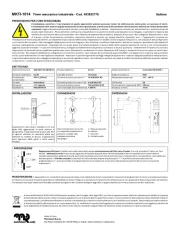
2 September 2025
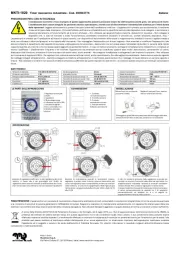
1 September 2025
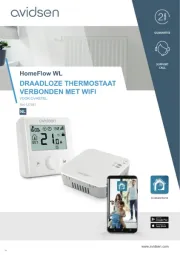
30 Augustus 2025
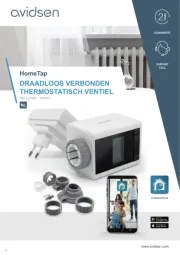
30 Augustus 2025
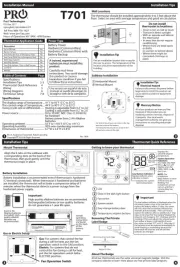
26 Augustus 2025
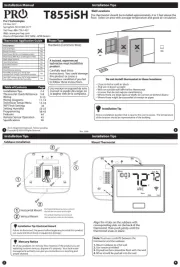
26 Augustus 2025
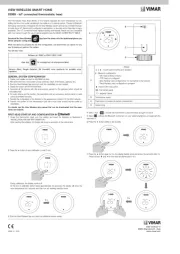
26 Augustus 2025
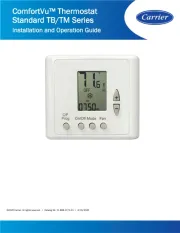
26 Augustus 2025
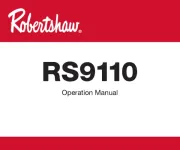
26 Augustus 2025
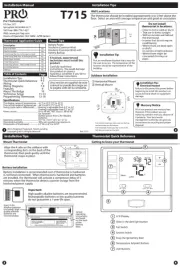
26 Augustus 2025